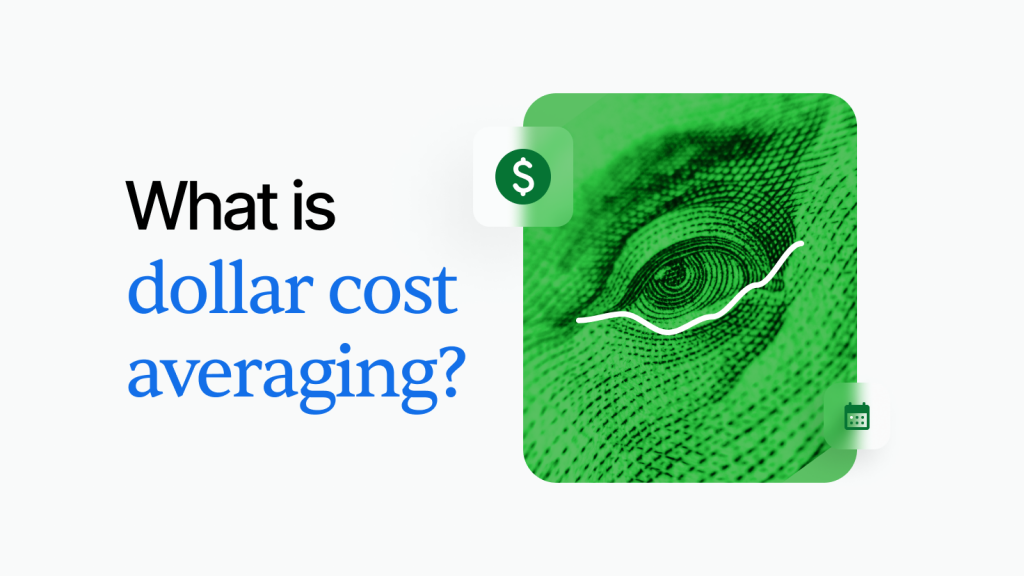Investing can be intimidating, especially when market volatility is involved. Enter dollar cost averaging – a tried and true strategy that can help mitigate risk and promote disciplined investing. In this guide, we’ll explore what dollar cost averaging is, its benefits, and how you can implement it in your investment portfolio.
Understanding dollar cost averaging
Dollar cost averaging is an investment strategy where an investor divides up the total amount to be invested across periodic purchases of a target asset. By doing this, investors aim to reduce the impact of volatility on the overall purchase. The purchases occur regardless of the asset’s price and at regular intervals. This method contrasts with lump-sum investing, where a large amount is invested all at once.
How does dollar cost averaging work?
The core idea behind dollar cost averaging is regularity and consistency. Here’s a breakdown of how it works:
- Fixed investment amount: Decide on a fixed amount of money to invest regularly, such as monthly.
- Regular intervals: Make the investment at regular intervals, regardless of market conditions.
- Consistent asset purchase: Purchase the same asset, like stocks, mutual funds, or ETFs, every time.
Example: Suppose you decide to invest €6 000 over a year with dollar cost averaging. Instead of investing the entire amount at once, you invest €500 at the beginning of each month. This approach ensures that you buy more shares when prices are low and fewer shares when prices are high, averaging out the cost of your investments over time.
Benefits of dollar cost averaging
Dollar cost averaging offers several advantages for investors. By spreading out your investments, you reduce the risk of making a large investment at a potentially inopportune time, thus reducing the impact of volatility. This strategy promotes disciplined investing, as regular investments help instill a habit of saving and investing. It also avoids market timing, removing the pressure of trying to time the market, which even seasoned investors find challenging.
Additionally, dollar cost averaging mitigates emotional investing by helping investors avoid the emotional rollercoaster of reacting to market highs and lows. It provides a clear, structured way to enter the market, helping to manage risk through regular investments. This method also supports a long-term investment strategy by promoting consistent investing habits and reducing the emotional impact of market volatility.
How to start dollar cost averaging
Dollar cost averaging for beginners offers a straightforward and less daunting way to enter the market. This method involves investing a fixed amount of money at regular intervals, regardless of market conditions. By doing so, beginners can avoid the pressure of trying to time the market and reduce the risk of making poor investment decisions based on short-term market fluctuations.
To start with your dollar cost averaging strategy, follow these steps:
1. Determine your investment amount: Determine how much you can comfortably invest on a regular basis without impacting your financial stability. This amount should be affordable enough to allow you to stick to the plan over the long term.
2. Choose your investment interval: Common intervals include monthly or bi-weekly, but it can be any period that suits your financial situation. Regular intervals are key to the dollar cost averaging strategy.
3. Select your investment assets: Choose the assets you want to invest in, such as stocks, mutual funds, or ETFs. Dollar cost averaging in stocks, dollar cost averaging in mutual funds, and dollar cost averaging in ETFs are popular choices. For more on ETFs, check out our guide to ETFs.
4. Automate your investments: Set up automatic transfers to your investment account. Automation ensures that you stick to your investment plan without having to remember to make each transaction manually.
5. Review regularly: Periodically review your investment strategy and make adjustments as needed to stay aligned with your financial goals. This ensures effective dollar cost averaging and risk management in your portfolio.
Example: Dollar cost averaging in action
Let’s say you decide to invest €500 per month in a stock mutual fund. Here’s how dollar cost averaging might look over six months:
Month
Investment amount
Share price
Shares purchased
Jan
€500
€50
10
Feb
€500
€40
12.5
Mar
€500
€45
11.11
Apr
€500
€55
9.09
May
€500
€50
10
Jun
€500
€60
8.33
In total, you invested €3 000 and purchased 61.03 shares. While the average share price over these six months is €50, your actual average cost per share is lower, at €49.17.
This example demonstrates how dollar cost averaging helps manage the impact of market volatility by buying more shares when prices are low and fewer shares when prices are high.
Here’s how it’s calculated:
Average share price
(Sum of share prices) / (Number of months)
= (50 + 40 + 45 + 55 + 50 + 60) / 6
= 300 / 6
= €50
Actual average cost per share
(Total amount invested) / (Total shares purchased)
= 3 000 / 61.03
= €49.17
Because you bought more shares when prices were lower and fewer when prices were higher, the actual cost per share is lower than the average price, a key benefit of dollar cost averaging.
With this strategy, you smooth out price fluctuations and lower the risk of making a large investment at a high price.
For more detailed strategies on starting your investment journey, visit our guide on how to start investing.
Dollar cost averaging in volatile markets
Volatile markets can be intimidating for investors due to frequent and unpredictable price swings. However, dollar cost averaging in volatile markets can turn this volatility into an advantage. By investing with dollar cost averaging, you buy more shares when prices are low and fewer shares when prices are high, effectively reducing the average cost per share over time. This approach mitigates the risk of investing a large sum at an inopportune moment and helps to manage the emotional stress of market fluctuations.
For instance, during periods of market downturns, many investors might hesitate to invest, fearing further declines. With dollar cost averaging, you continue investing regardless of market conditions, which can lead to significant gains when the market eventually recovers. This strategy ensures that you are consistently building your portfolio, even when the market is volatile.
Dollar cost averaging in 2025 is particularly relevant as economic uncertainties continue to affect market stability. Investors can maintain a disciplined investment approach, ensuring they are not swayed by short-term market movements. By sticking to a regular investment schedule, you can take advantage of lower prices during market dips and benefit from eventual recoveries.
Additionally, this strategy supports long-term investment goals and helps investors stay committed to their financial plans.
To further explore effective investment strategies during volatile times, check out our article on risk diversification.
Pros and cons of dollar cost averaging
Dollar cost averaging has its advantages and disadvantages, making it essential to understand both to decide if it’s the right strategy for you.
Pros
- Reduces the risk of investing a large sum at the wrong time. By spreading your investments over regular intervals, you can lower the risk associated with market timing.
- Promotes disciplined investing. Regular investments help instill a habit of saving and investing, making it easier to stay committed to your financial goals.
- Simplifies decision-making. You don’t need to worry about market timing, as you invest consistently regardless of market conditions.
Cons
- Potential for lower returns in a rising market. By spreading out your investments, you might miss out on gains you could have achieved by investing all at once at the beginning.
- Higher transaction fees. Frequent investments can incur higher transaction fees, although many platforms offer low-cost options.
To explore different ways to invest, check out our article on investment strategies.
Feature
Dollar cost averaging
Lump sum investing
Investment Approach
Invests a fixed amount at regular intervals
Invests a large amount all at once
Risk Level
Lower risk, reduces the impact of market volatility
Higher risk, dependent on market timing
Market Timing
Reduces the need to time the market
Requires precise market timing
Emotional Management
Helps manage emotional reactions to market changes
Can lead to anxiety if the market declines soon after investing
Potential Returns
Potentially lower in a consistently rising market
Potentially higher in a rising market
Disciplined Investing
Promotes regular investing habits
Does not inherently promote regular investing
When deciding between dollar cost averaging and lump sum investing, consider your risk tolerance, investment goals, and market conditions. For many, dollar cost averaging provides a balanced approach that reduces risk while promoting consistent investing habits.
Build your wealth with dollar cost averaging
Dollar cost averaging is a powerful strategy for investors looking to manage risk and invest systematically. Whether you’re new to investing or a seasoned pro, this method can help you build wealth steadily over time. By spreading your investments over regular intervals, you reduce the risk of market volatility and promote disciplined investing.
Ready to get started? Explore more about investment strategies on Mintos by checking out our detailed guides:
- 10 passive income ideas to build wealth in 2025
- A beginner’s guide to value investing
- What are alternative investments?
- 5 Best ETF trading strategies for beginners in 2025
- What is factor investing, and how does it work?
- How do stocks work? A beginner’s guide to the stock market
- Investing in real estate: A comprehensive guide for 2025
Disclaimer:
This is a marketing communication and in no way should be viewed as investment research, advice, or recommendation to invest. The value of your investment can go up as well as down. Past performance of financial instruments does not guarantee future returns. Investing in financial instruments involves risk; before investing, consider your knowledge, experience, financial situation, and investment objectives.

